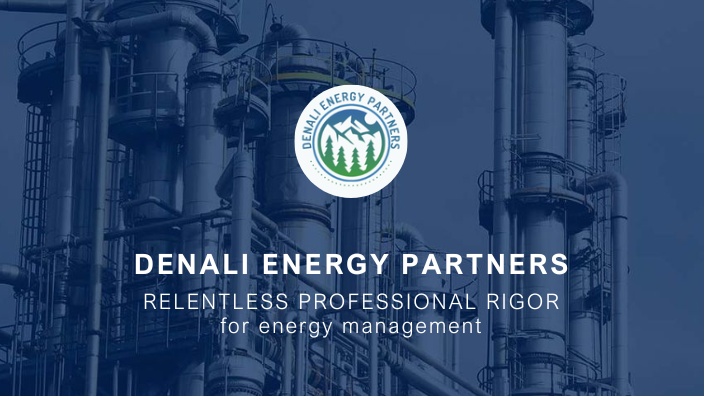What are the New Technologies of Combined Cycle that are Under Development
Denali-ep
| 17 de octubre de 2024
What are the New Technologies of Combined Cycle that are Under Development
Introduction
The constant evolution of energy technologies is essential to tackle the challenges of the future energy landscape. In this context, combined cycle gas plants (CCGT) stand out as an efficient and flexible option. But what innovations are on the horizon to further enhance these systems? In this article, we will explore the latest technologies under development for combined cycles, their benefits, and how they are changing the energy landscape.
What is a Combined Cycle?
Definition and Basic Operation
A combined cycle is a power generation plant that uses two energy cycles: the gas cycle and the steam cycle. The gas turbine converts fuel into mechanical and electrical energy, while the residual heat is used to generate steam that, in turn, drives a second turbine.
Advantages of Combined Cycle
- Improved Efficiency: Higher efficiency in energy conversion compared to simple cycles.
- Emission Reduction: Lower emissions of pollutants per unit of energy generated.
Emerging Technologies in Combined Cycle
High-Temperature Gas Turbines
New gas turbines are designed to operate at higher temperatures, enhancing the efficiency of the combined cycle. These turbines utilize advanced materials, such as ceramics and special alloys, to withstand extreme temperatures.
Hydrogen Generation as Fuel
Hydrogen is a clean fuel that can replace fossil fuels in gas turbines. Current research focuses on how to efficiently and safely integrate hydrogen into combined cycles.
Energy Storage Technologies
Energy storage is crucial for managing the intermittency of renewable sources. Emerging technologies include flow batteries and thermal storage systems that integrate with combined cycles for more flexible operation.
Advancements in Materials and Design
Advanced Materials
Research in composite materials and high-temperature resistant ceramics is booming. These materials allow turbines to operate at higher temperatures without compromising durability.
Next-Generation Turbine Design
Innovative turbine designs aim to improve efficiency while reducing size and weight of components. Modular turbines and compact designs are being developed for easier implementation in various environments.

Integration with Renewable Energies
Combined Cycles with Solar Energy
Integrating solar energy with combined cycles allows for more continuous and efficient power generation. Concentrated solar power (CSP) systems can provide additional heat for steam cycles.
Wind Energy and Combined Cycles
Wind turbines can supply energy to the combined cycle system, helping balance load and improve grid stability. The combination of wind energy and combined cycles is being tested at various facilities.
Optimization and Advanced Control
Artificial Intelligence and Machine Learning
Artificial intelligence (AI) and machine learning are revolutionizing how combined cycle plants are controlled and optimized. These systems enable more efficient management of maintenance and real-time operations.
Predictive Maintenance
Predictive maintenance uses advanced data analytics to foresee failures and conduct repairs before serious issues arise. This technology reduces downtime and improves overall system efficiency.
Pilot Projects and Success Cases
International Projects
Several international projects are implementing these advanced technologies in their combined cycle plants. We will analyze some success stories that highlight the viability and benefits of these innovations.
Local Experiences
We will also explore local projects adopting new technologies to optimize their combined cycle plants, demonstrating how global solutions adapt to specific contexts.
Conclusion
The new technologies under development for combined cycles are shaping the future of energy generation. From more efficient gas turbines to the integration of hydrogen and renewable energies, these innovations promise to enhance efficiency, reduce emissions, and offer greater flexibility in plant operations. Advances in materials and AI will also play a crucial role in optimizing these systems. With the implementation of these technologies, combined cycles remain an attractive and sustainable option for the future energy landscape.
What is a Combined Cycle Gas Turbine (CCGT)?
A Combined Cycle Gas Turbine (CCGT) is a power generation system that combines two thermodynamic cycles: the gas cycle and the steam cycle. This system utilizes a gas turbine to generate electricity and captures the waste heat from this process to produce steam, which drives a steam turbine for additional electricity generation, resulting in higher overall efficiency compared to standalone gas or steam turbines.
How does a CCGT work?
The process begins with burning natural gas in a gas turbine, producing hot exhaust gases that spin the turbine and generate electricity. The remaining heat from these exhaust gases is used in a Heat Recovery Steam Generator (HRSG) to create steam, which then drives a steam turbine for further electricity production. This dual process significantly enhances energy efficiency, often reaching efficiencies of 55-60%134.
What are the advantages of CCGT plants?
CCGT plants offer several advantages, including:
Higher Efficiency: They can convert a larger portion of fuel energy into electricity compared to traditional plants.
Flexibility: They operate efficiently at partial loads and can quickly adapt to changes in electricity demand.
Lower Emissions: Natural gas combustion in CCGTs produces fewer pollutants compared to coal-fired plants.
Fast Start-Up: CCGTs can start up quickly and respond rapidly to fluctuations in power demand
What are the typical applications of CCGT technology?
CCGT technology is widely used for both base load and peak load power generation. It is particularly suitable for applications where there is a need for reliable and flexible power supply, such as in regions with increasing renewable energy sources that require backup generation capacity.
What challenges do CCGT plants face?
Some challenges include:
Operational Complexity: The integration of gas and steam turbines requires careful management of heat recovery systems and maintenance.
Initial Costs: While operational costs are lower due to efficiency, the initial capital investment for CCGT infrastructure can be high.
Water Quality Management: Maintaining high-quality water for steam generation is crucial to prevent corrosion and ensure efficient operation




